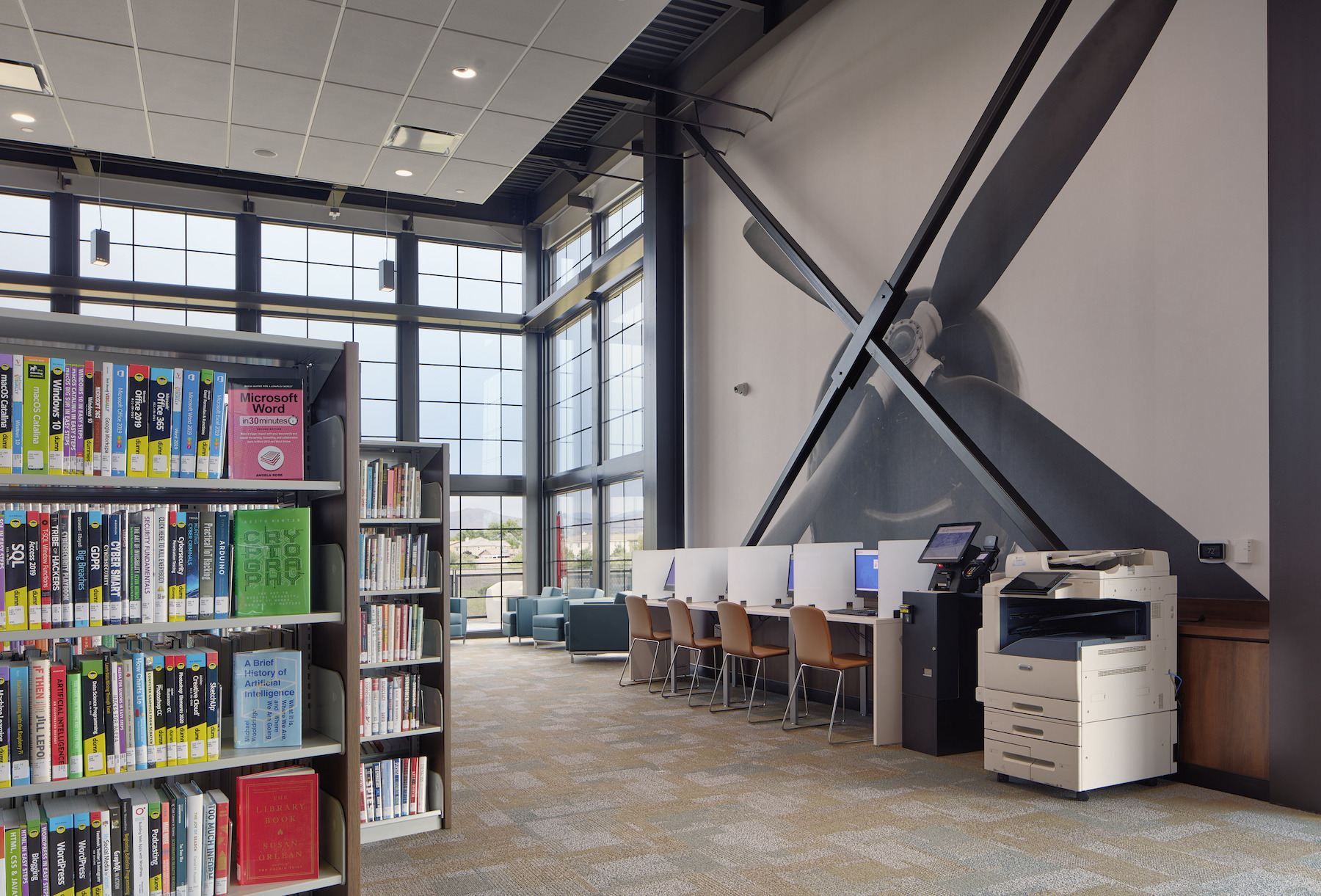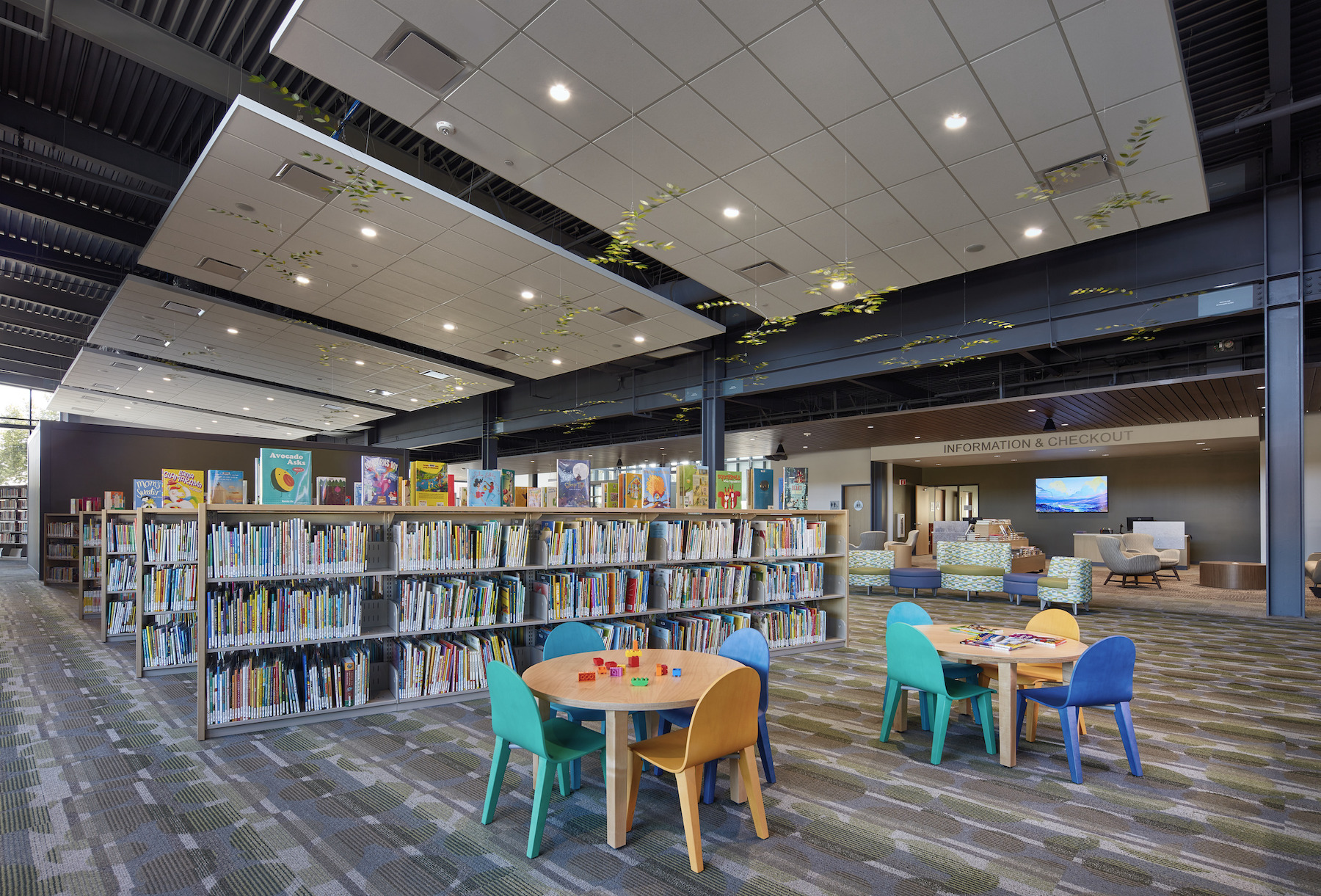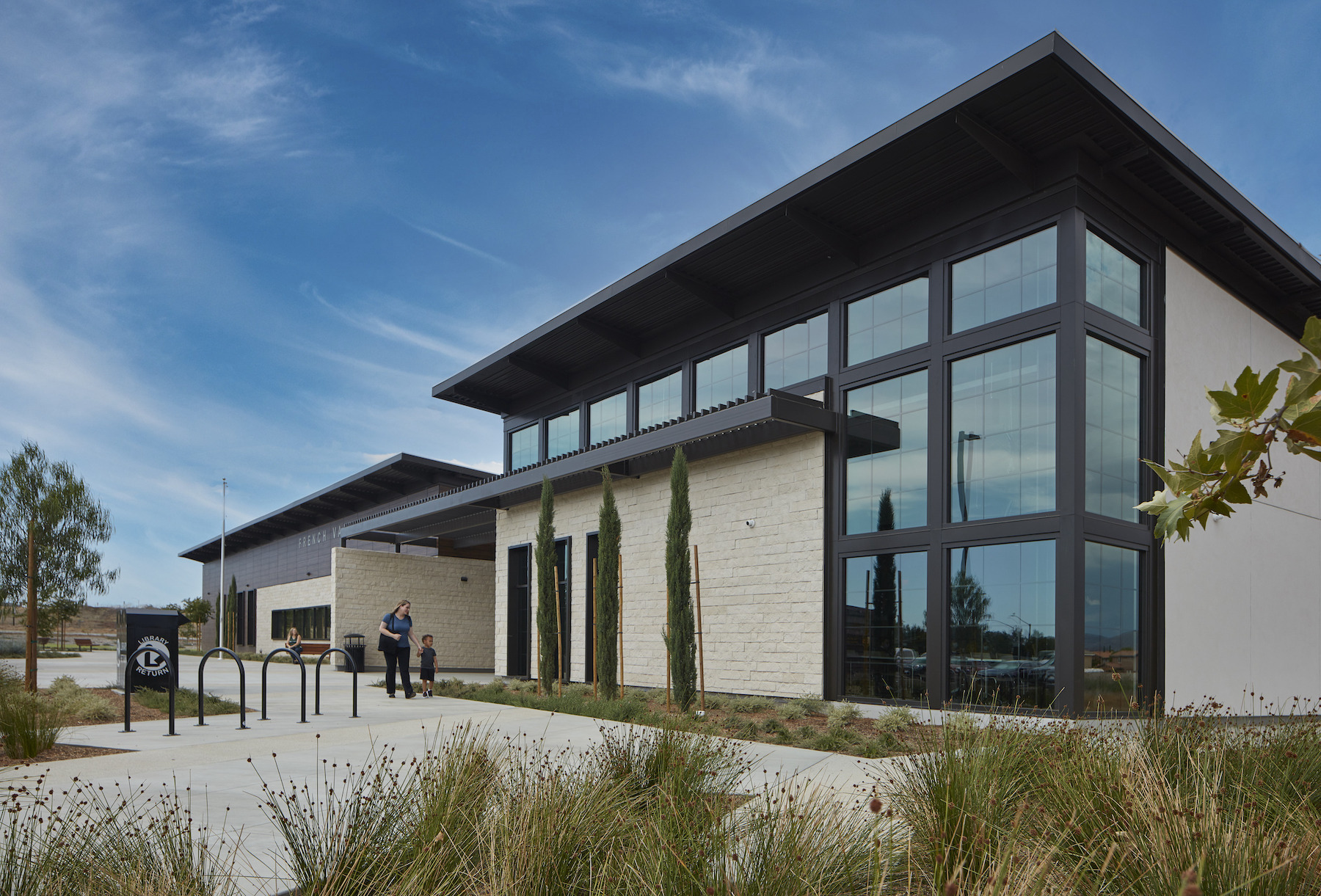Over the summer, a building team that included CannonDesign and McCarthy Building Companies completed three new libraries in Riverside County, Calif., that were built simultaneously in just 20 months under a $46 million public-private partnership contract that included a nonprofit specializing in funding P3 projects.
The three libraries—in Desert Hot Springs, Menifee, and French Valley—are now owned by Community Facility Public Private Partnerships (CFP3), a 501(c)(3) nonprofit that financed this project via tax-exempt bonds. Over the course of CFP3’s ownership contract, which can run up to 30 years, the County expects to save $25 million in debt service, operations, and maintenance costs. The installation of solar panels alone is expected to save $600,000.
As early as 2014, Riverside County—the fourth most-populous county in the state and the 10th most-populous in the U.S.—realized that its library system wasn’t keeping up with its growth. For example, at the time its existing 10,500-sf library in Menifee was serving 350,000 patrons. And that library’s location near a major roadway excluded expansion, according to a white paper about this project that CFP3 has published.
Back in the 1970s, the County’s Board of Supervisors approved the dedication of 1% of its general property tax for library services. But that wasn’t enough to build and maintain newer, larger branches.
P3 PRECEDENTS

Prior to its library contract, the County had done about 15 P3s for different building types that covered 1 million sf and $600 million of property. To envision how many new libraries it needed, the County’s Office of Economic Development, in partnership with Library Systems and Services (which since the 1990s had operated Riverside’s library system), hired Group 4, a South San Francisco firm that specializes in project planning for libraries and community centers.
In 2018, the Riverside County Library System created an RFP for three new libraries, and received a dozen proposals. The County, which approved this project a year later, determined that the best, and least expensive, course of action would be to hire one team for all three projects under a P3 contract structure.
There were several advantages to taking this route, not the least being that the project could move forward without as many public hearings, procurement protocols, and referendums that can add months to scheduling. And because CFP3 is a nonprofit, it would not be saddled with property taxes as the libraries’ owner. The interest it charged the County for the cost of the project, at between 3% and 3.5%, was less than half of the return on equity a private P3 entity would have expected.
WHAT PARTNERS BROUGHT TO THE TABLE


The partners in this P3 included Omni West Group, a development and property management firm, that came up with the libraries’ operational budget. CannonDesign created the blueprints for all three libraries that, while having different layouts, share similar attributes like children’s areas, tech centers, and community spaces.
McCarthy, which served as this project’s general contractor, was brought on board in part for its long-time relationships with local subcontractors, which prevented manpower-shortage delays. McCarthy assigned one project manager to monitor all three builds. CFP3 calculates that the design and construction of the libraries accounted for 20% of the total cost, with the rest going toward maintenance and operations.
During construction, there were some community concerns about the 25,000-sf library in French Valley, which opened July 31 and is the only one of the three located in a residential neighborhood. CFP3 states that these concerns were resolved with meetings and virtual fly-throughs of the building.
The new Menifee library opened July 24 at 20,000 sf, and was built to be an anchor for a larger retail development. The Desert Hot Springs library—the first of the three to open, on June 26—is 15,500 sf, and replaces a library that was only around one-fifth that size. “This library is a wonderful anchor for the community,” says Matthew Greiner, AIA, NCARB, Senior Vice President at CannonDesign. “It’s a home base for the wonderful people who live here. It’s where so many bright ideas and futures will be launched.”
Related Stories
| Feb 23, 2011
The library is dead, long live the library
The Society for College and University Planning asked its members to voice their thoughts on the possible death of academic libraries. And many did. The good news? It's not all bad news. A summary of their members' comments appears on the SCUP blog.
| Feb 11, 2011
Former Richardson Romanesque hotel now houses books, not beds
The Piqua (Ohio) Public Library was once a late 19th-century hotel that sat vacant and deteriorating for years before a $12.3 million adaptive reuse project revitalized the 1891 building. The design team of PSA-Dewberry, MKC Associates, and historic preservation specialist Jeff Wray Associates collaborated on the restoration of the 80,000-sf Richardson Romanesque building, once known as the Fort Piqua Hotel. The team restored a mezzanine above the lobby and repaired historic windows, skylight, massive fireplace, and other historic details. The basement, with its low ceiling and stacked stone walls, was turned into a castle-like children’s center. The Piqua Historical Museum is also located within the building.
| Jan 21, 2011
Library planned for modern media enthusiasts
The England Run Library, a new 30,000-sf glass, brick, and stone building, will soon house more than 100,000 books and DVDs. The Lukmire Partnership, Arlington, Va., designed the Stafford County, Va., library, the firm’s fourth for the Central Rappahannock Library System, to combine modern library-browsing trends with traditional library services.
| Nov 23, 2010
The George W. Bush Presidential Center, which will house the former president’s library
The George W. Bush Presidential Center, which will house the former president’s library and museum, plus the Bush Institute, is aiming for LEED Platinum. The 226,565-sf center, located at Southern Methodist University, in Dallas, was designed by architect Robert A.M. Stern and landscape architect Michael Van Valkenburgh.
| Nov 9, 2010
Designing a library? Don’t focus on books
How do you design a library when print books are no longer its core business? Turn them into massive study halls. That’s what designers did at the University of Amsterdam, where they transformed the existing 27,000-sf library into a study center—without any visible books. About 2,000 students visit the facility daily and encounter workspaces instead of stacks.
| Nov 3, 2010
Seattle University’s expanded library trying for LEED Gold
Pfeiffer Partners Architects, in collaboration with Mithun Architects, programmed, planned, and designed the $55 million renovation and expansion of Lemieux Library and McGoldrick Learning Commons at Seattle University. The LEED-Gold-designed facility’s green features include daylighting, sustainable and recycled materials, and a rain garden.
| Oct 13, 2010
Bookworms in Silver Spring getting new library
The residents of Silver Spring, Md., will soon have a new 112,000-sf library. The project is aiming for LEED Silver certification.
| Aug 11, 2010
JE Dunn, Balfour Beatty among country's biggest institutional building contractors, according to BD+C's Giants 300 report
A ranking of the Top 50 Institutional Contractors based on Building Design+Construction's 2009 Giants 300 survey. For more Giants 300 rankings, visit http://www.BDCnetwork.com/Giants
| Aug 11, 2010
Jacobs, Arup, AECOM top BD+C's ranking of the nation's 75 largest international design firms
A ranking of the Top 75 International Design Firms based on Building Design+Construction's 2009 Giants 300 survey. For more Giants 300 rankings, visit http://www.BDCnetwork.com/Giants














